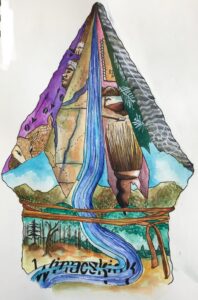(Get it? Like A Farewell to Arms? Anyway.)
Today I visited Salmon Hole for the last time. Not much has changed since last Saturday, but I have noticed more birds and also that the buds have grown larger. Because of all of the rain, the water levels are still really high, and I expect them to continue to be that way well into the summer. It is probably only by late summer that they will fall drastically, or that is how it was in my experience. Looking back, I am shocked to have watched this place change throughout the year, at least with clear intent. Obviously we watch phenological changes occur all the time, wherever we live, anywhere we frequent. It is the intention, the focus that varies, and I have never done that before for such a long period of time.
Through having to do these assignments, I have also learned a lot about the natural and cultural history of Salmon Hole, which has been generally unobstructed. The most significant instance of this are the rocks where the trails lead out to the Winooski. They are covered with ridges, remnants of when the waves of the Iapetus Ocean lapped up on those rocks. Since then, the Champlain Sea and eventually the Winooski River formed, and created a site for human activity dating as far back as 12,000 years. The toponym Winooski stems from “winooskiok,” meaning “the land of onions,” and it is the reason that the City Market/Onion River Co-op has its name today. Before colonial settlers came to what we now know as Vermont, the Abenaki lived here, as the site is a rich breeding ground for Salmon and had vibrant plant communities to sustain a foraging community. Though people no longer live at Salmon Hole, the town of Winooski is seen behind the dam, and the Riverwalk trails beginning at Salmon Hole offer a new use for the land: recreation.
While I would not say that I am a part of my place, I have certainly gotten to know it well. For me, Salmon Hole was a place outside campus, outside my zone of everyday life. I was a diligent visitor, but I do not see myself as a part—and I think that’s okay. Over time, coming back every 1-3 weeks, I have started to make specific connections and notice increasingly minute changes. I know which trees the beavers come back to and I know where the water level has been based on where the driftwood has shifted to. Maybe for some people, that makes them feel like a part of the place. I think that personally, I would need to continue coming back for a long time to feel that way, but that isn’t to say that I won’t. I’d like to come back, and I intend to. Maybe not often, but enough to test the knowledge of place that I have gained.





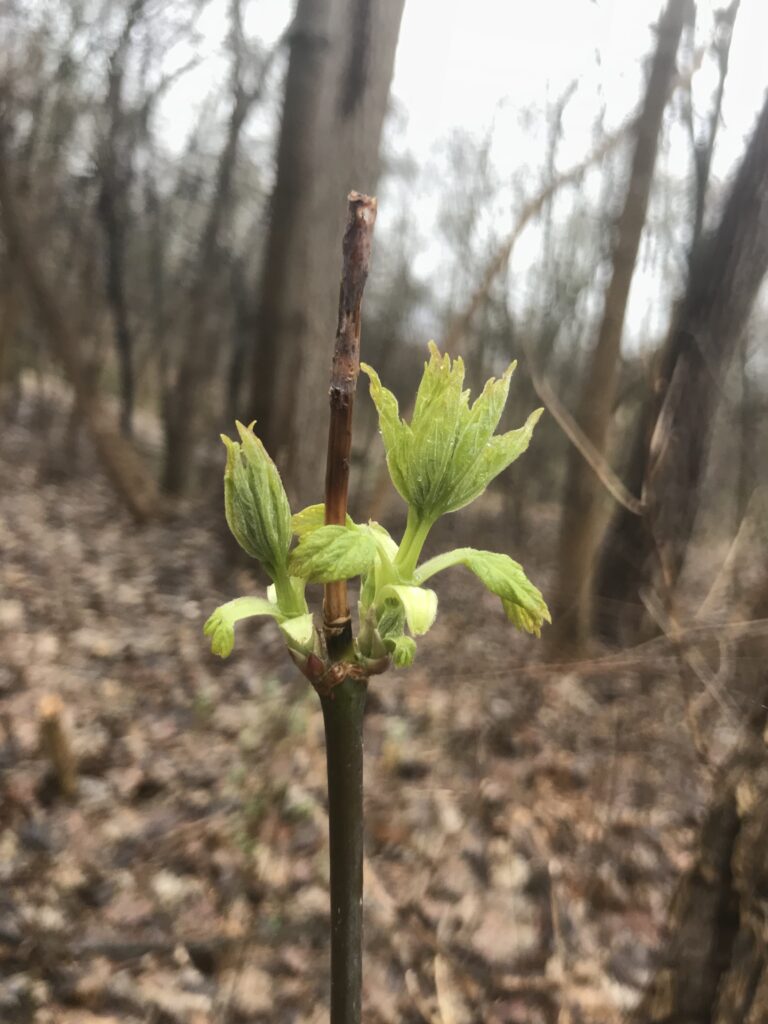

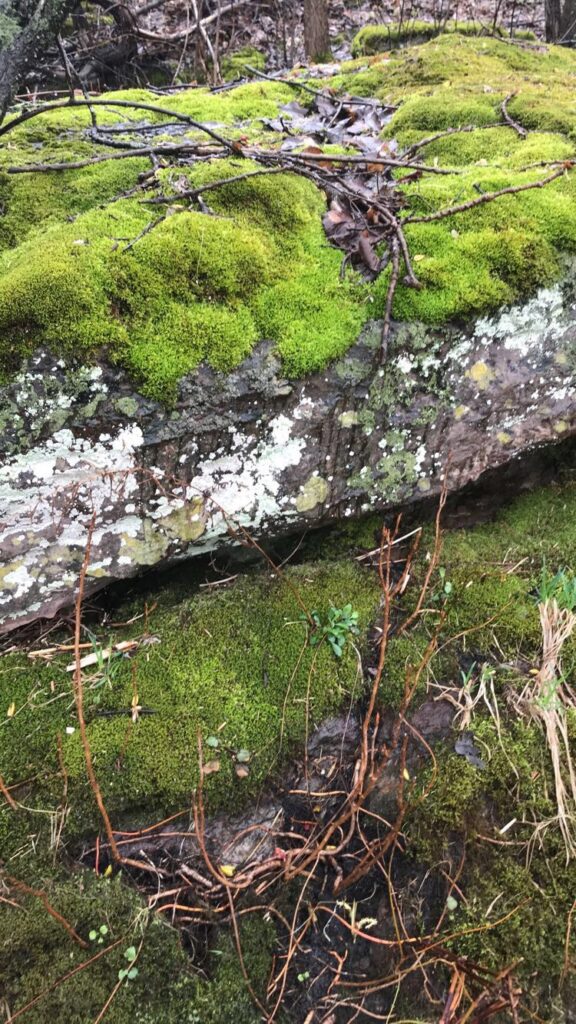
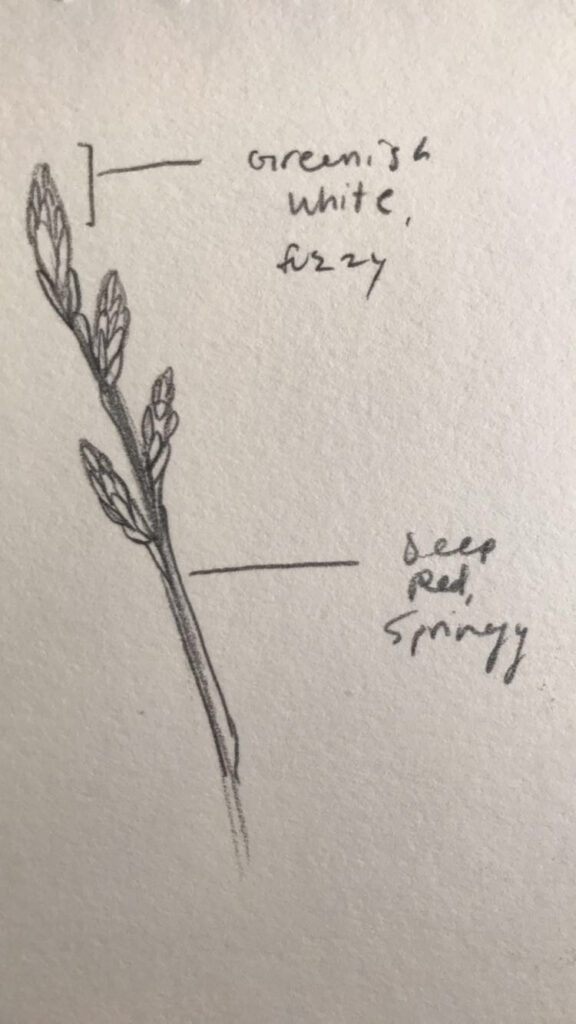






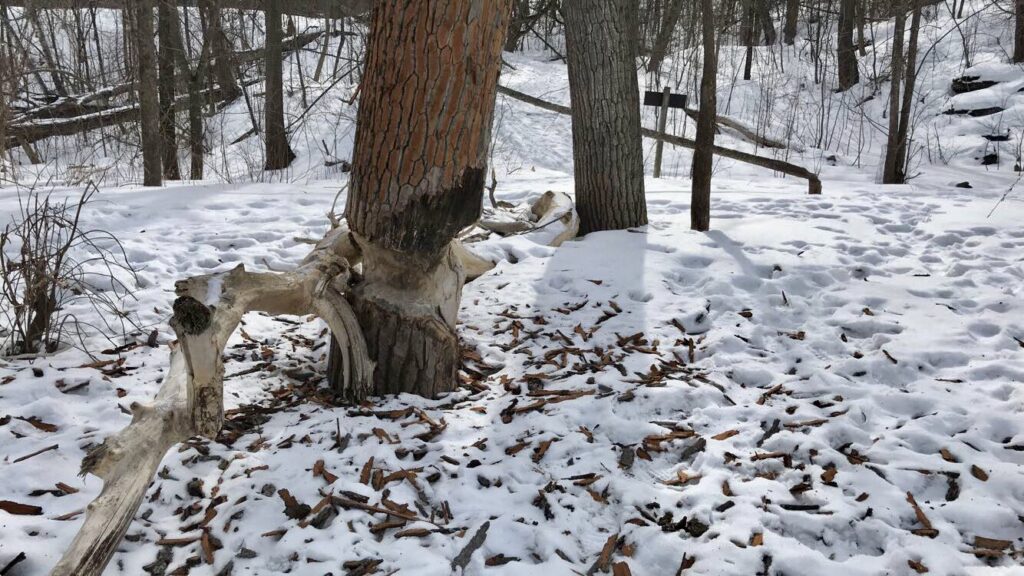

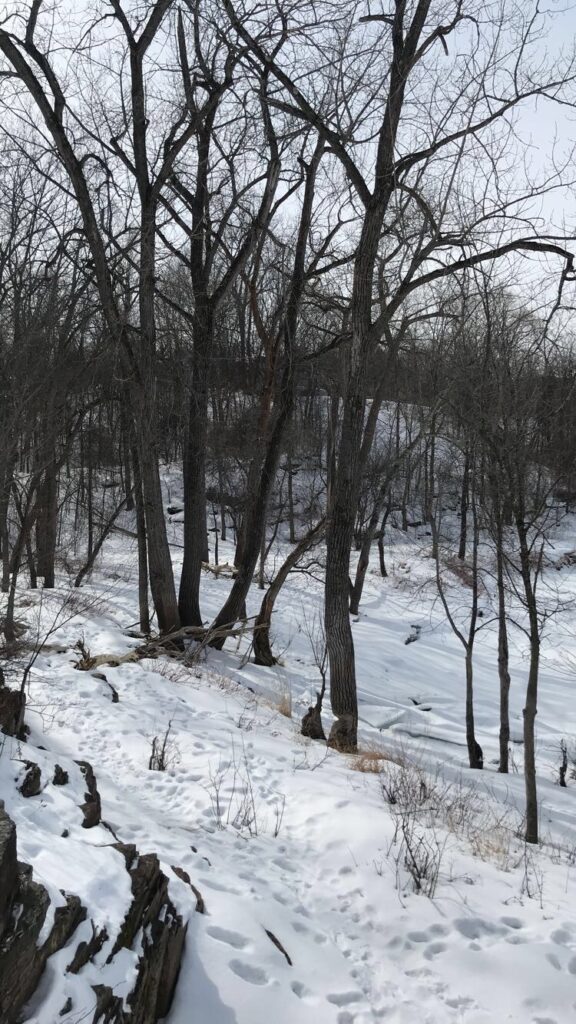


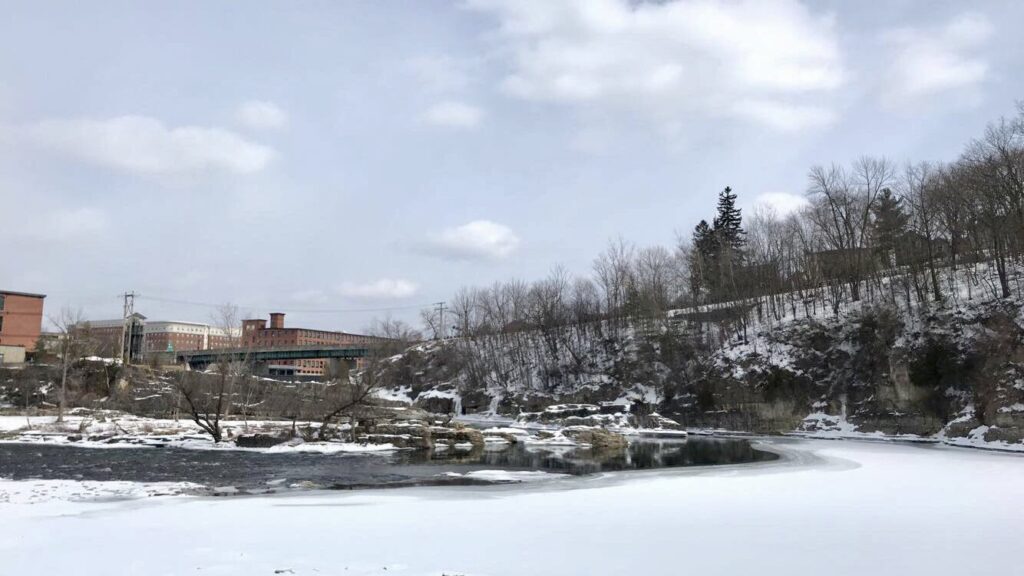
 Salmon Hole looks very different from the last time I saw it! There are many changes at the site that have appeared since early December, the most noticeable of which is that large parts of the Winooski have frozen over and the ice has rifted multiple times. The shape of the river looks different because of the snow sitting on the ice wherever the current is not strong enough.
Salmon Hole looks very different from the last time I saw it! There are many changes at the site that have appeared since early December, the most noticeable of which is that large parts of the Winooski have frozen over and the ice has rifted multiple times. The shape of the river looks different because of the snow sitting on the ice wherever the current is not strong enough.







